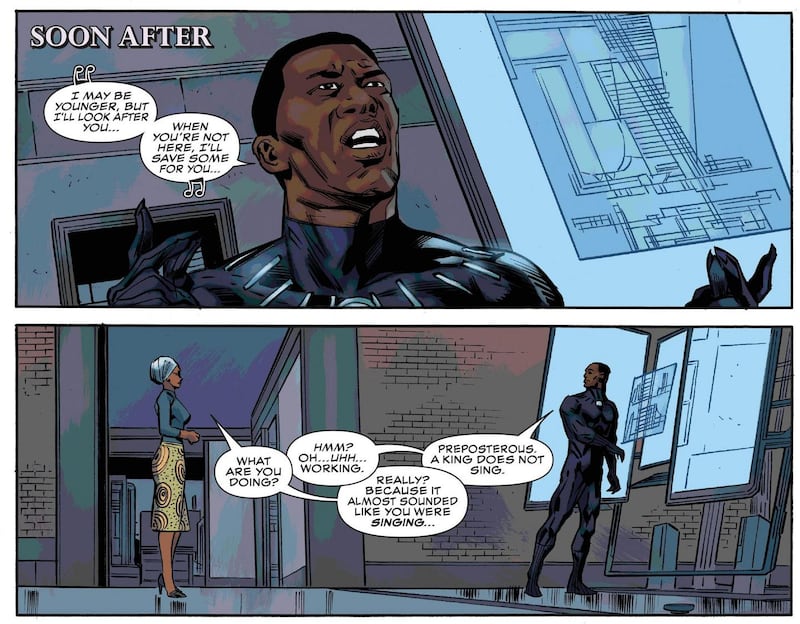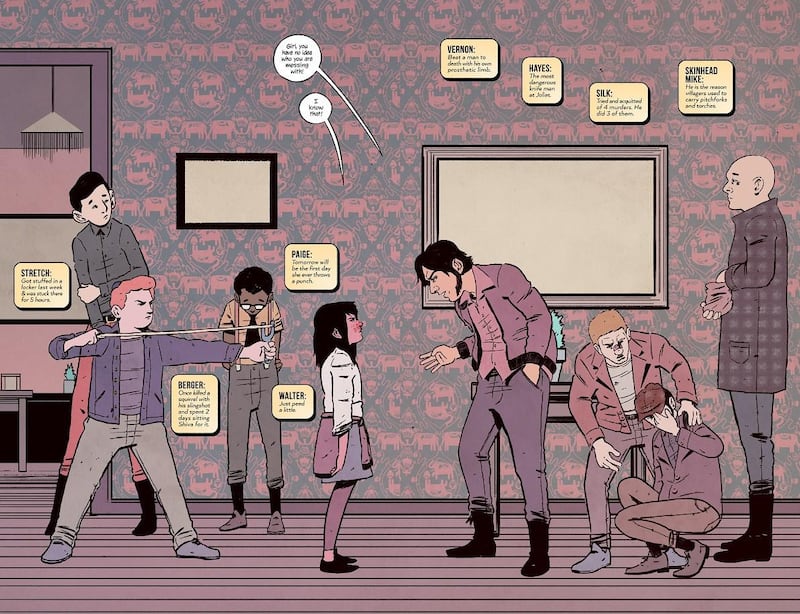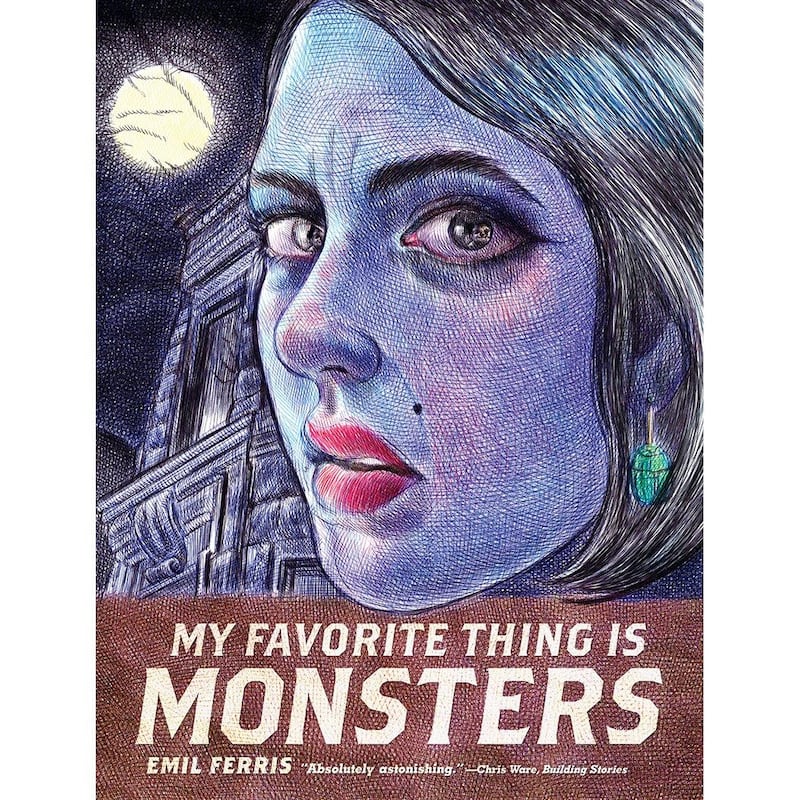Comics and graphic novels continued to drive the film, television and game worlds in 2017. But while those adaptations focused on the cape and cowl heroics of traditional superhero comics, their source medium had another year of incredible work spanning every conceivable genre.
Not, of course, that superhero is a dirty word. Even in a year in which DC's decision to rehash Watchmen for another slew of spin-offs rankled with purists, some of this year's finest books have been artful reworkings or updates of classic characters.
Fresh from having spun gold pretty much everywhere he's hung his hat in the last few years, Tom King's take on Batman has been rightly praised for its stripped-back style and psychological leanness, even managing to craft a charming tale in this millennium's least likely crossover, Batman Vs Elmer Fudd. It was, however, his take on a much less noteworthy character that may have been King's finest work all year.
Mister Miracle, with art by Mitch Gerads, is a mind-bending trip through the eyes of a superhero who may or may not be losing his mind. Originally a character from the Fourth World era of myth-inspired heroes created by Jack Kirby, Mister Miracle was born of the Godlike Highfather but escaped to Earth to become a world-beating theatrical escape artist.
King’s entry in the saga sees our hero entangled in a cosmic adventure involving suicide, betrayal and the kind of family drama that arises when your entire extended family is made up of deities. He’s also led to believe reality itself is being shifted around him.
The series keeps the reader on the edge of comprehension with King's trademark conversational dialogue, and the masterful art direction from Mitch Gerads, whose disorienting, hyper-saturated panels fracture and hiss in correspondence with its protagonist's mental state, at times seeming riddled with VHS decay. Mister Miracle is bold, bright storytelling that shows superhero comics can still craft spiky, uncomfortable and thrilling material from the tights and spandex playbook.
Elsewhere, Saladin Ahmed's Black Bolt, with art by Christian Ward, also treads a psychedelic path through some less familiar characters, this time a few Marvel B-players that may have languished a little nearer the bargain bin in recent years. King of the Inhumans, Black Bolt (whose real name is, pleasingly enough, Blackagar Boltagon) can level mountains with his voice, and travels throughout the universe using his giant teleporting pug, Lockjaw. But now he finds himself in a psychic space prison that has robbed him of his powers. The result is nowhere near as ludicrous as it sounds, although still bonkers in the best possible sense of the word.

Black Panther and The Crew, by Ta-Nehisi Coates and Yona Harvey, with art by Butch Guice and Mack Chater, is a timely, and topical, team-up that gathers Marvel's leading black heroes – Black Panther, Luke Cage, Misty Knight and the X-Men's Storm –to protect Harlem from those who would harm it.
While Netflix's Luke Cage showed the success that can be wrought in letting Marvel's black characters reflect on contemporary social issues, the hiring of author Ta-nehisi Coates as the creative force behind a resurgent Black Panther series showed a greater degree of ambition. Best known for penning award-winning essays and books on the racial politics of America, it's no surprise that Coates' run has shown his deft skill for commenting on social inequality, urban gentrification and post-colonial racial animus.
What may come as a shock is the brio with which he deploys the more silly and garish superhero elements, without which such a story could be preachy or unfocused. Mystifyingly, this book was cancelled early in its run. One hopes Marvel realise their mistake, since Black Panther and the Crew is a rollicking team action adventure that casts an open eye toward police brutality, street protests and racial tensions while still allowing space for murderous cyborg law enforcement robots called Americops. Really, what else could you ask for?
Away from the big two, Image has had a bumper crop of continuing series, with strong continues from Bryan K Vaughan, who's one-two punch of genre-annihilating behemoth Saga, and cult favourite mini-behemoth Paper Girls, were predictably excellent once again.
Also of note is Head Lopper, written and drawn by Andrew MacLean, a colourful fantasy epic that centres on Norgal, an archetypal bearded tough who works as a killer of mythical monsters. In this task he is beset by all manner of big bad beasties and devious political factions, and accompanied by the talkative witch's head he carries with him in a bag.
MacLean's deliciously clean art has shades of Mike Mignola and Adventure Time's Pendleton Ward, while his uncanny knack for character design makes the arrival of each new issue one of the best recurring treats for any comics fan, not least for the generous length of each 80-page instalment.

Having been among the best debuts in 2016, Black Hammer by Jeff Lemire and Dean Ormston (Dark Horse) continued its joyous run this year. The series is centred on a group of superheroes trapped in an uncanny and mysterious rural farming community following the cataclysmic battle that killed their team-mate, the titular Black Hammer himself.
The designs of this dysfunctional family unit draw their inspiration from the pulpy, four-colour adventures of comics’ Golden Age, brilliantly evoked with Lemire’s nimble characterisation and Ormston’s beautifully evocative painting. Full of potboiler glee and emotional resonances, the family drama to be found in Black Hammer’s artificial world are, in some ways, as real as superheroes get.

4 Kids Walk Into A Bank by Matthew Rosenberg and Tyler Boss (Black Mask Studios) channels the foibles and fancies of youth with a pitch-perfect author's voice. Centring on the eponymous teen quartet, this five-issue mini-series tells the story of Paige Turner (it's that type of book) and her three no-mark pals, Berger, Walter and Stretch, as they try to avert, or possibly stage, a heist in their local town.
The story is peppered with beautifully rendered characters and charming dialogue that zips across the page. Matthew Rosenberg's script fizzes with the joy, hilarity and horror of adolescence, telling an understated and delightful tale of family, friendship and armed robbery. Scrappy kids getting in over their heads is a rich vein to mine, but if Stranger Things and Paper Girls mainlined the work of Spielberg and King, 4 Kids Walk Into A Bank adds a welcome dash of Linklater at his teen-scented best.

My Favourite Thing Is Monsters by Emil Ferris (Fantagraphics) is one of the finest books of the year in any genre and, for sheer originality alone, surely one of the most striking comics debuts of all time.
It’s the fictional diary of a precocious young girl in late 1960 Chicago, who harbours two obsessions: movie monsters, and the murder of her upstairs neighbour. Done entirely with biro on lined notebook pages, Ferris’s art eschews standard panel formats, and operates primarily as a sequence of wild, scratchy pen drawings that bring the unfolding mystery to life in a way few atom-perfect, hyper-glossed mainstream comics would ever dare.
Her eye for monsters leads to our young protagonist being depicted as a werewolf throughout, but extends to the human subjects that make up the “M.O.B.” around her (those dead-eyed normies who are “mean, ordinary and boring”). Drawn with a frantic, bug-eyed zeal that wows page after page, Emil Ferris has made a graphic novel of such quality, the only question is how it took the world so long to notice her.
House of Women by Sophie Goldstein (Fantagraphics) concerns four women who land on the planet Mopu with the intent of civilising its inhabitants as an Earth colony, but find their task more complicated than they at once expected. On other levels, it can be read as an extended parable on anything from imperialism to religious indoctrination or sexual politics. Beautifully penned in inky black and white, Goldstein's art has the cartoonish feel of Hark A Vagrant's Kate Beaton, which serves only to place the work's more harshly affecting moments into stunning relief.
Finally, The Best We Could Do (Abrams Comicarts) is a stunning graphic memoir in which Thi Bui details her mother's journey from Vietnam to the US, foregrounded with the ramifications this experience has had on their family relationships. Bui's exquisite, painterly style illuminates the tragedies of war, death, and massive displacement, but is also brutally honest regarding the smaller horrors of emotional disconnection and second-generation angst.
How, wonders Bui, can an American-born child understand or comprehend the sacrifice and pain they've been spared by their parents' actions, let alone the restrictive traditions and mores of a time and place they've never known? The Best We Could Do is an incredible journey through all these themes that showcases the power comics have to tell stories of every scale, in every intimate, heart breaking detail.





















